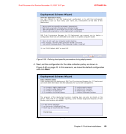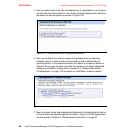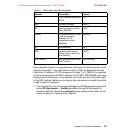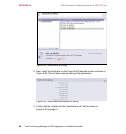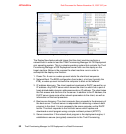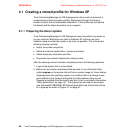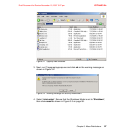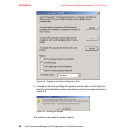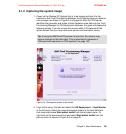
4372ch02.fm Draft Document for Review November 15, 2007 3:27 pm
52 Tivoli Provisioning Manager for OS Deployment in a Retail Environment
Figure 2-48 Starting the actual deployment
The Deploy Now feature should trigger that the client machine performs a
network boot in order to load the Tivoli Provisioning Manager for OS Deployment
mini operating system. This is a simple operating system that contacts the Tivoli
Provisioning Manager of OS Deployment server and runs the deploy on the
target machine. Below is the process the client machine runs in order to
accomplish the deploy now function:
1. Power On: A user or a wake-up event starts the client boot sequence.
2. Network Boot: The BIOS configuration (boot order), a hot key (typically the
F12), or wake-up event instructs the computer to boot on the network.
3. IP address discovery: The client machine broadcasts a DHCP request for an
IP address. Any DHCP server which knows the client or which has a pool of
freely distrubutable dynamic addresses sends an IP address. The client takes
the first answer and confirms it to the server. In addition to the IP Address, the
DHCP server gives some other network parameters to the client, as well as
information on the boot procedure.
4. Boot server discovery: The client computer then proceeds to the discovery of
the boot server. The boot server is responsible for delivering a network boot
program to the client. It is not necessarily the same computer as the DHCP
server. The client responds to the first boot server which replies and
downloads a small program using a simple multicast protocol (MTFTP).
5. Server connection: If the network boot program is the deployment engine, it
establishes a secure (encrypted) connection to the Tivoli Provisioning




